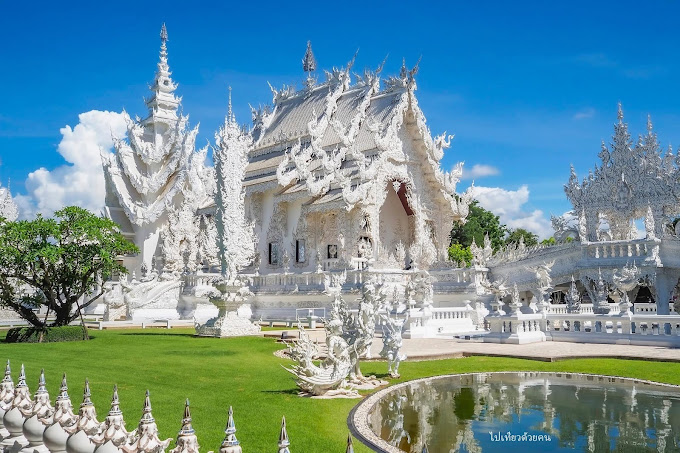The Beauty of Thailand’s Islands
Thailand is renowned for its stunning and diverse islands, each offering a unique experience that attracts millions of visitors each year. Situated in Southeast Asia, the country’s islands are scattered across the Andaman Sea and the Gulf of Thailand, serving as tropical havens for travelers seeking both adventure and relaxation. These islands boast a variety of landscapes, from pristine beaches and azure waters to lush jungles and vibrant marine life, making them a popular vacation destination for nature lovers and beachgoers alike.
Phuket, the largest island, is famous for its lively atmosphere, bustling markets, and dynamic nightlife. Visitors can partake in a range of activities, including water sports such as snorkeling, diving, and surfing, as well as enjoying its rich cultural heritage in temples and local festivals. Equally captivating is Koh Samui, known for its luxurious resorts and tranquil beaches. The island also draws tourists with its exciting nightlife, wellness retreats, and the stunning Ang Thong National Marine Park, ideal for a day of exploration and adventure.
For those seeking a more idyllic setting, Koh Phi Phi offers dramatic landscapes, crystal-clear waters, and opportunities for scuba diving in some of the world’s richest marine environments. The islands are also celebrated for their unique history and culture, enhancing their allure for travelers. Koh Tao, a smaller island, is particularly popular among diving enthusiasts, providing access to numerous dive sites and underwater schools that cater to both beginners and experienced divers alike.
With activities ranging from thrill-seeking water sports to serene beach lounging, Thailand’s islands cater to varied preferences, ensuring that every visitor finds their perfect slice of paradise. The enchanting charm of these islands invites exploration and adventure, marking them as must-visit destinations in Southeast Asia.
Planning Your Island-Hopping Adventure
Embarking on an island-hopping adventure in Thailand requires careful planning to ensure a memorable experience. The best times to visit Thailand’s islands typically align with the dry season, which spans from November to March. During these months, travelers can enjoy favorable weather conditions and clearer skies. Specific islands may have slightly different peak seasons; for instance, the Andaman Sea islands, like Phuket and Koh Phi Phi, are most accessible during this period, while the Gulf Islands, such as Koh Samui, see their peak in December and January.
Transportation options are abundant when navigating between islands. Ferries are a popular choice, providing regular services between major islands. For those with time constraints, domestic flights are available, significantly reducing travel time between popular destinations. Booking these services in advance is advisable, especially during peak seasons, to secure the best prices and schedules.
Vacation Stay Suggstions
Suggested itineraries vary based on the length of stay. For a three-day trip, one could explore Koh Samui and Koh Phangan, enjoying the upbeat culture and beautiful beaches. A longer itinerary, spanning 7 to 10 days, might include visits to Koh Phi Phi, Koh Lanta, and Railay Beach, allowing travelers to engage with the unique offerings of each destination. Budget considerations are essential; accommodations range from luxury resorts to economical hostels, catering to diverse preferences and financial plans. Researching options and making reservations earlier ensures greater availability and potentially lower rates.
In conclusion, successful island-hopping in Thailand hinges on thoughtful planning, considering factors such as the seasons, transportation methods, and accommodation options. By preparing adequately, travelers can fully embrace the enchanting beauty of Thailand’s islands and create lasting memories.2.
Top Activities and Experiences on the Islands
Thailand’s islands offer a myriad of activities and experiences that cater to every type of traveler, whether seeking adventure or relaxation. One of the most prominent islands, Koh Tao, is celebrated for its stunning underwater scenery, making it a prime destination for snorkeling and diving. Enthusiasts can explore vibrant coral reefs and encounter diverse marine life, including turtles, reef sharks, and colorful fish. Several diving schools provide courses for both beginners and advanced divers, ensuring that everyone can enjoy the rich biodiversity beneath the waves.
Moving on to Koh Samui, visitors can immerse themselves in cultural landmarks and local traditions. The Big Buddha temple, with its striking 12-meter statue, is a must-visit, as is Wat Plai Laem, which features intricate sculptures of deities. Beyond these sights, Koh Samui’s vibrant markets and local cuisine provide a genuine glimpse into Thai culture. Culinary classes are also popular, allowing tourists to learn traditional cooking techniques and recreate authentic dishes at home.
Phuket, known for its lively atmosphere, offers a distinct nightlife experience. From beach parties on Patong Beach to sophisticated rooftop bars with breathtaking views, the island pulses with energy after dark. Live music, dance clubs, and night markets enhance the vibrant nightlife, providing travelers with multiple options to unwind and socialize. Additionally, water sports such as parasailing, jet skiing, and island-hopping excursions are abundant, ensuring adventure seekers remain engaged.
Lastly, Koh Lipe is the ideal escape for those desiring tranquility. Its pristine white sand beaches and crystal-clear waters provide a serene backdrop for relaxation. Visitors can enjoy leisurely sunbathing, indulge in spa treatments, or partake in yoga sessions that connect them with nature. The island’s remote setting encourages a slower pace, perfect for unwinding amidst stunning natural beauty.
Cultural Insights and Local Cuisine
Thailand’s islands are not only renowned for their breathtaking vistas and pristine beaches but also for their rich cultural heritage. Each island tells a unique story, influenced by various traditions and customs that reflect the country’s history and the diversity of its communities. Festivals such as Songkran, the Thai New Year water festival, showcase the vibrant and interactive spirit of the islands. During this celebration, locals and visitors alike engage in joyful water fights, symbolizing the cleansing of sins and the welcoming of the new year. Other significant events, such as Loy Krathong, where beautiful floating lanterns adorn the waterways, provide a glimpse into the spiritual beliefs and practices of Thai society.
Understanding and respecting local customs and traditions is vital for travelers aiming to appreciate island life fully. For instance, dressing modestly when visiting temples and participating in ceremonies is a sign of respect. Engaging with local communities through homestays or cultural workshops can also deepen the connection and foster mutual understanding between visitors and residents.
Thai Cuisine
Alongside cultural insights, the culinary landscape of Thailand’s islands offers an array of tantalizing flavors that are integral to its allure. Thai cuisine is characterized by its balance of the four fundamental tastes: sweet, sour, salty, and spicy. Each region boasts distinctive dishes influenced by local ingredients and cooking methods. On the islands, seafood takes center stage, with specialties like grilled fish, spicy prawn salads, and coconut curries tantalizing the palate.
Street food markets are not to be missed, as they present a delightful array of local snacks and meals. Popular options include pad thai, mango sticky rice, and som tam (papaya salad). Notable dining spots can be found amidst bustling night markets or in seaside restaurants, allowing visitors to experience authentic flavors while enjoying stunning ocean views. By savoring the culinary delights alongside immersing oneself in the vibrant culture, travelers can create a holistic and enriching experience during their journey through Thailand’s enchanting islands.







